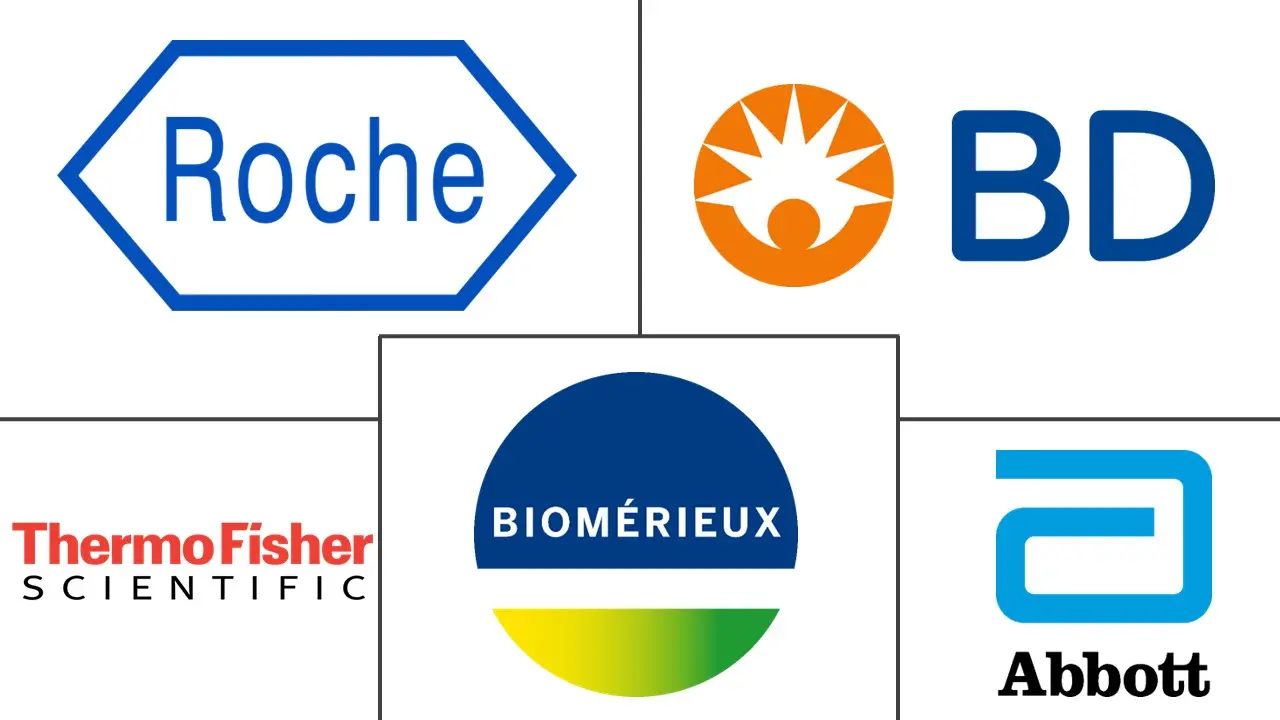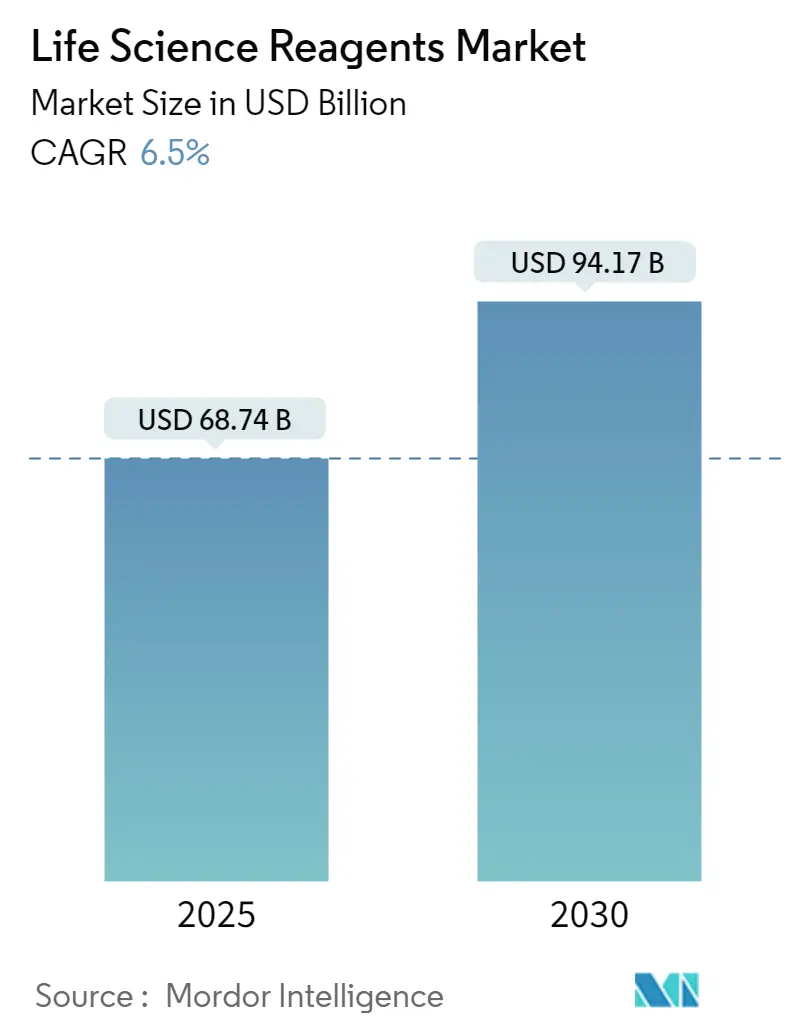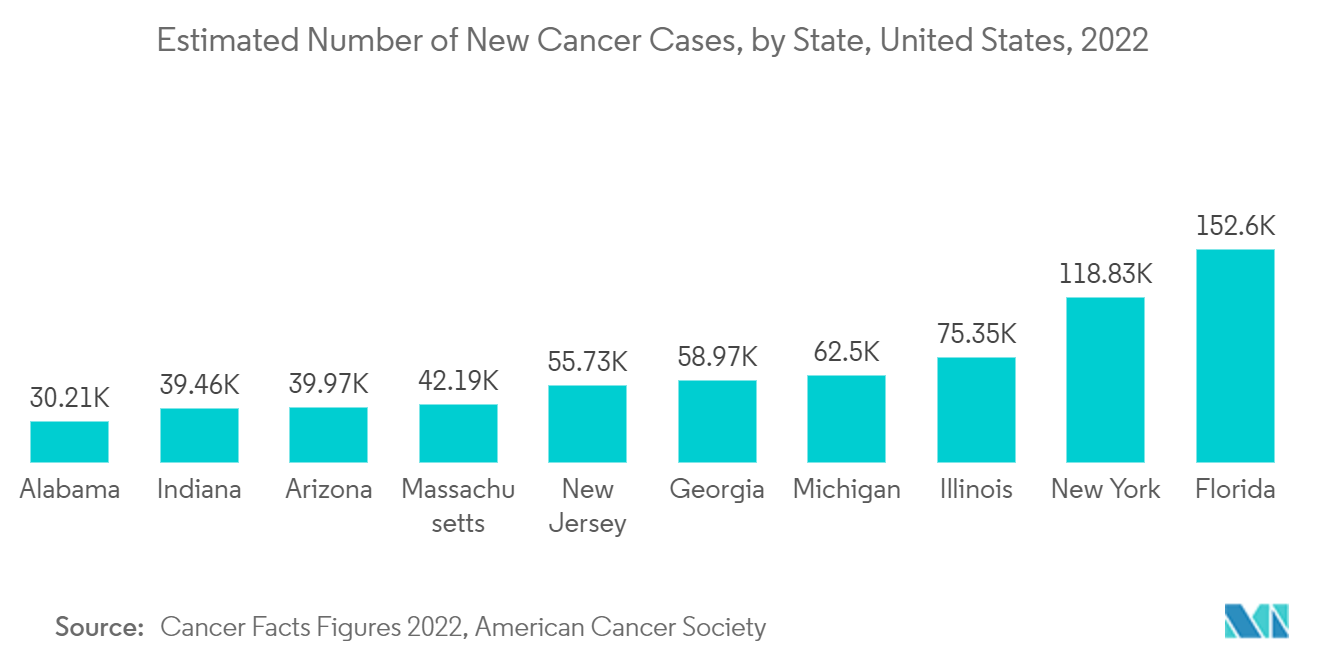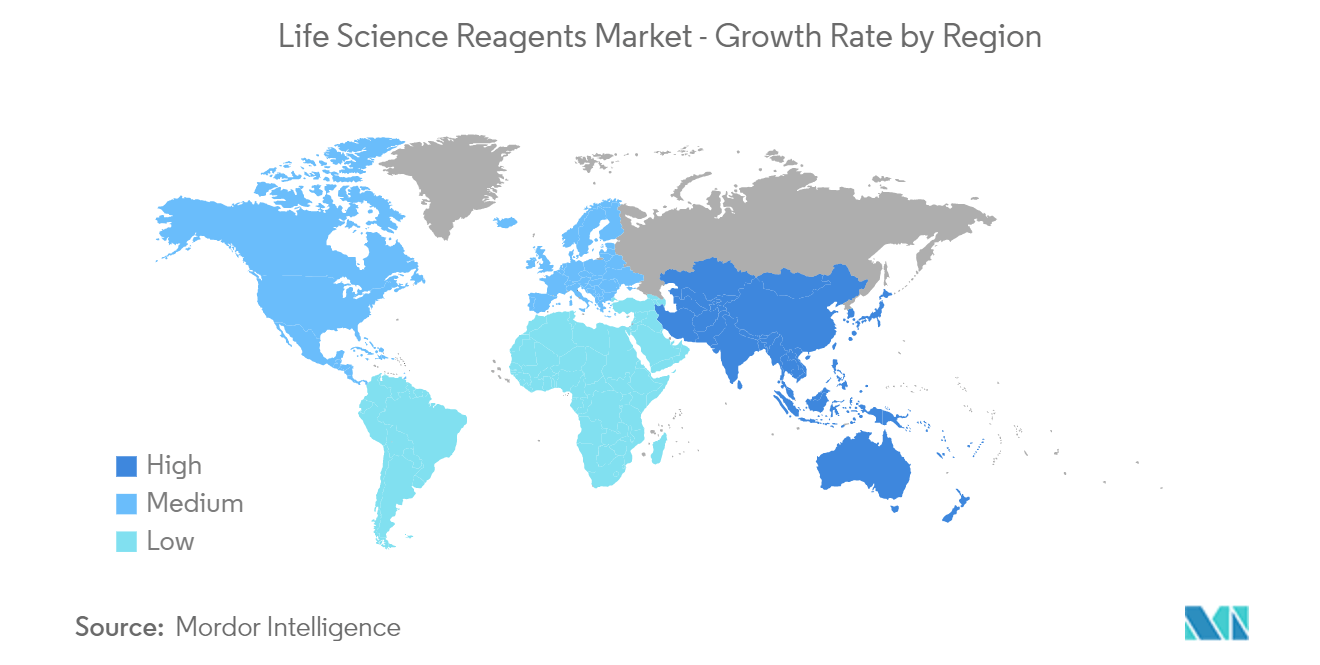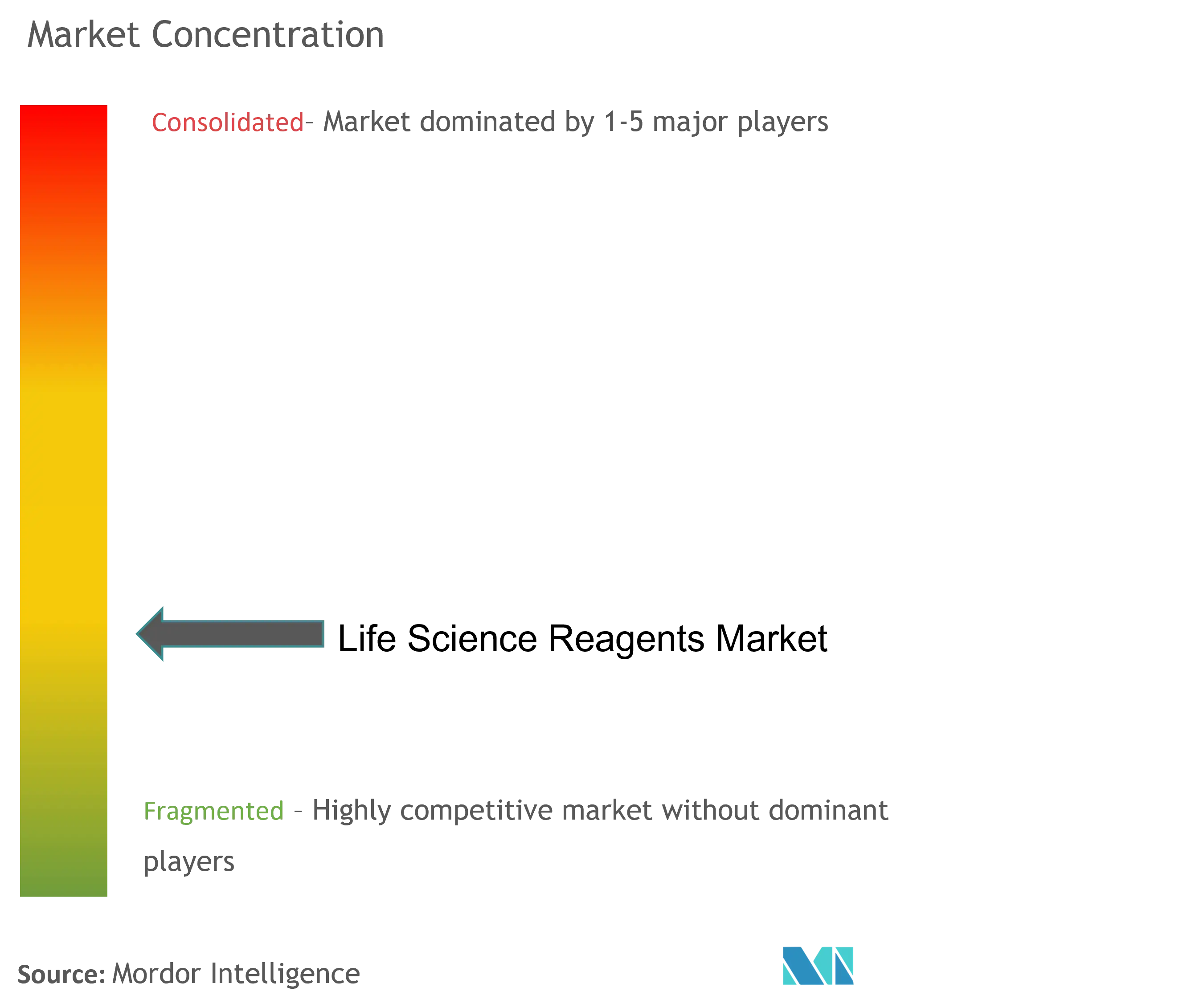Life Science Reagents Market Analysis
The Life Science Reagents Market size is estimated at USD 68.74 billion in 2025, and is expected to reach USD 94.17 billion by 2030, at a CAGR of 6.5% during the forecast period (2025-2030).
During the COVID-19 pandemic, there was a rising demand for life science reagents, which pushed the growth of the life science reagents market during the period studied. COVID-19 is an infectious disease, the infection rate of which had risen exponentially worldwide. The rising number of COVID-19 cases increased the demand for tests and several types of research requiring reagents, propelling the market studied toward growth. For instance, in April 2021, Labcorp launched Pixel by Labcorp's COVID-19 PCR Test Home Collection Kit for small businesses, an initiative aimed at providing fast, convenient, and reliable testing for companies. Furthermore, due to the wide use of various agents in vaccine research and development, the market studied is expected to show growth during the forecast period.
Factors driving market growth include the high prevalence of infectious diseases and technological advancements in life sciences and biotechnology. Pathogenic microorganisms, such as bacteria, parasites, and viruses, are responsible for the high prevalence of infectious diseases. These diseases can be spread directly or indirectly from one person to another. They are highly transmittable and can quickly spread if preventive measures are not taken. The lack of healthcare structure and facilities can make these diseases fatal, which is the case in many developing and underdeveloped countries.
According to an article published by the Center for Disease Control and Prevention (CDC) in February 2022, Salmonella bacteria causes about 1.35 million infections, 26,500 hospitalizations, and 420 deaths in the United States every year. A high number of infectious diseases every year creates a burden on the healthcare system in the country. Therefore, there is an unprecedented increase in the demand for diagnostic reagents, boosting the market studied. Similarly, increasing incidence of chronic disorders are expected to increase the market growth. For instance, according to the October 2022 update of the World Health Organization, the incidence of tuberculosis (TB) was estimated to be around 10.6 million people in 2021, globally, of which 1.2 million were children. Similarly, a research study published in April 2022, in the National Library of Medicine stated that allergic rhinitis represents a significant health concern and affects about 400 million people, globally. Also, as per the same source, the prevalence of allergic rhinitis has increased over the years due to rising urbanization and pollution. It is further expected to increase over the years and boost the demand for life science reagents during the forecast period.
However, the high cost associated with reagents and the stringent regulatory framework act as barriers to market growth.
Life Science Reagents Market Trends
The Hospitals and Diagnostic Laboratories Segment is Expected to Hold Significant Market Share
During the COVID-19 pandemic, the demand for reagents increased as hospitals and diagnostic laboratories widely used life science reagents to test the target patients. Researchers are also using reagents to know the epidemiology of the diseases, which will boost segment growth. Moreover, there has been a rapid increase in molecular point-of-care testing for suspected COVID-19 patients in hospitals across the world, leading to a surge in the use of life science reagent products used in testing, positively influencing the overall market growth. Furthermore, increasing chronic diseases such as cancer is another factor in market growth. For instance, the incidence of other chronic diseases, like cancer, is also high in the United States. According to the 2022 report by the American Cancer Society, an estimated 1.9 million new cancer cases and 609,360 cancer deaths were expected in 2022.
Additionally, strategic initiatives by major key players to strengthen their regent portfolio will boost the market growth. For instance, in October 2021, Dr. Lal PathLabs Limited acquired Sequoia Capital-backed Suburban Diagnostics in an all-cash deal. With this deal, Dr. Lal Pathlabs will get access to 44 laboratories and diagnostic centers and 150 collection centers. In diagnostic laboratories and hospitals, the adoption of life science reagents increased, which is likely to continue during the forecast period to maintain the pace of the life science reagents market.
North America is Expected to Hold a Significant Share in the Market During the Forecast Period
North America is expected to hold a major market share in the global life science reagents market due to the rise in the geriatric population, increasing prevalence, and higher incidence of infectious diseases in this region. According to a July 2022 update by the Centers for Disease Control and Prevention, around six in ten Americans are living with at least one chronic disease, and four in ten adults have two or more chronic diseases. These diseases are one of the major causes of death and disability in North America. Similarly, as per the Canadian Cancer Statistics 2021 released in November 2021, an estimated 229,200 Canadians were diagnosed with cancer in 2021. Furthermore, the International Diabetes Federation (IDF) published in December 2021 estimated 14 million adults in Mexico were living with diabetes. Therefore, for the early and effective diagnosis of the diseases, the demand for life science reagents is expected to increase, hence augmenting the market studied during the forecast period.
Furthermore, launching new products and adopting initiatives such as partnerships, investments, and acquisitions by major market players will boost the market growth. For instance, in April 2021, BOC Sciences launched in-vivo RNA transfection kits in the company's popular in vivo delivery product series, including siRNA in vivo transfection kits and mRNA in vivo transfection kits, which are suitable for in vivo transfection of siRNA and mRNA, respectively. The company also provides customized products that encapsulate target molecules into in vivo transfection reagents that target specific tissues.
Moreover, the increase in research and development activities and the presence of favorable healthcare infrastructure are fueling the growth of the overall regional market to a large extent.
Life Science Reagents Industry Overview
The life science reagents market is fragmented and competitive, with several major players. In terms of market share, a few major players dominate the market. Some of the major market players are Hoffmann-La Roche, Thermo Fisher Scientific Inc., Becton, Dickinson and Company, Abbott, BioMerieux SA, Merck KGaA, Danaher Corporation, Siemens Healthineers, DiaSorin SpA, and Sysmex Corporation.
Life Science Reagents Market Leaders
-
F. Hoffmann-La Roche Ltd
-
Becton, Dickinson and Company
-
BioMerieux SA
-
Thermo Fisher Scientific, Inc
-
Abbott Laboratories
- *Disclaimer: Major Players sorted in no particular order
Life Science Reagents Market News
- June 2022: Exothera SA collaborated with LogicBio Therapeutics and Polyplus-transfection SA to develop a highly scalable AAV manufacturing platform with a capacity from 200 L to 2,000 L.
- April 2022: H.U. Group Holdings Inc. and its wholly-owned subsidiary Fujirebio Holdings Inc. launched the in-vitro diagnostic Lumipulse Presto iTACT Tacrolimus. This reagent has been developed specifically for the fully automated chemiluminescence enzyme immunoassay system Lumipulse L2400.
Life Science Reagents Industry Segmentation
As per the scope of the report, a reagent is a compound or mixture added to a system to occur a chemical reaction or a test if a reaction occurs. Life science reagents play a key role in cell-based products, manufacturing and testing pharmaceutical drug products, and several other healthcare-related solutions.
The Life Science Reagents Market is Segmented by Product Type (Cell and Tissue Culture Reagents, Chromatography Reagents, Clinical Chemistry Reagents, Immunoassay Reagents, Molecular Diagnostic Reagents, Microbiology Reagents, Other Product Types), End User (Hospitals and Diagnostic Laboratories, Academic and Research Institutes, Other End Users), and Geography (North America, Europe, Asia-Pacific, Middle East and Africa, South America). The market report also covers the estimated market sizes and trends for 17 different countries across major regions globally. The report offers the market sizes and forecasts in terms of value in USD million for the above segments.
| By Poduct Type | Cell and Tissue Culture Reagents | ||
| Chromatography Reagents | |||
| Clinical Chemistry Reagents | |||
| Immunoassay Reagents | |||
| Molecular Diagnostic Reagents | |||
| Microbiology Reagents | |||
| Other Product Types | |||
| By End User | Hospitals and Diagnostic Laboratories | ||
| Academic and Research Institutes | |||
| Other End Users | |||
| By Geography | North America | United States | |
| Canada | |||
| Mexico | |||
| Europe | Germany | ||
| United Kingdom | |||
| France | |||
| Italy | |||
| Spain | |||
| Rest of Europe | |||
| Asia-Pacific | China | ||
| Japan | |||
| India | |||
| Australia | |||
| South Korea | |||
| Rest of Asia-Pacific | |||
| Middle East and Africa | GCC | ||
| South Africa | |||
| Rest of Middle East and Africa | |||
| South America | Brazil | ||
| Argentina | |||
| Rest of South America | |||
Life Science Reagents Market Research FAQs
How big is the Life Science Reagents Market?
The Life Science Reagents Market size is expected to reach USD 68.74 billion in 2025 and grow at a CAGR of 6.5% to reach USD 94.17 billion by 2030.
What is the current Life Science Reagents Market size?
In 2025, the Life Science Reagents Market size is expected to reach USD 68.74 billion.
Who are the key players in Life Science Reagents Market?
F. Hoffmann-La Roche Ltd, Becton, Dickinson and Company, BioMerieux SA, Thermo Fisher Scientific, Inc and Abbott Laboratories are the major companies operating in the Life Science Reagents Market.
Which is the fastest growing region in Life Science Reagents Market?
Asia Pacific is estimated to grow at the highest CAGR over the forecast period (2025-2030).
Which region has the biggest share in Life Science Reagents Market?
In 2025, the North America accounts for the largest market share in Life Science Reagents Market.
What years does this Life Science Reagents Market cover, and what was the market size in 2024?
In 2024, the Life Science Reagents Market size was estimated at USD 64.27 billion. The report covers the Life Science Reagents Market historical market size for years: 2019, 2020, 2021, 2022, 2023 and 2024. The report also forecasts the Life Science Reagents Market size for years: 2025, 2026, 2027, 2028, 2029 and 2030.
Our Best Selling Reports
Life Science Reagents Industry Report
Statistics for the 2025 Life Science Reagents market share, size and revenue growth rate, created by Mordor Intelligence™ Industry Reports. Life Science Reagents analysis includes a market forecast outlook for 2025 to 2030 and historical overview. Get a sample of this industry analysis as a free report PDF download.

